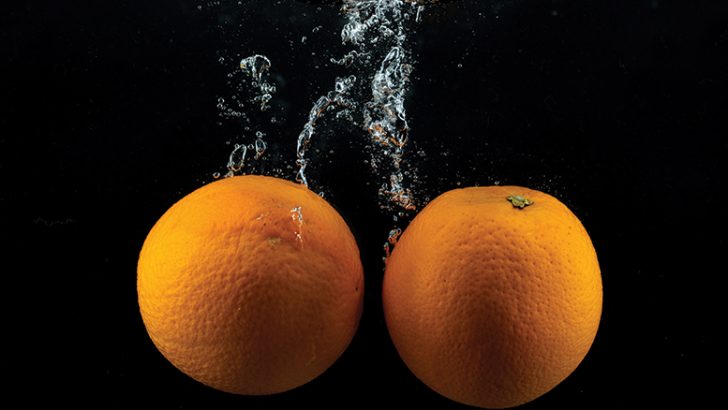Children’s Corner
There’s a lot to be learnt about how certain objects interact with water. It can also raise a of questions. Fruit for example, why do certain fruits that look big float, while a smaller fruit might sink? One of the biggest factors here is density.
When trying to guess if an object will float, it’s easy to be tricked by an object’s size. Density is defined as mass per unit of volume, and objects with a higher mass-to-volume ratio have a higher density. Objects that are denser than water will sink, while those that are less dense will stay afloat.
There’s an interesting and easy way to test this. Because it’s less dense than water, an unpeeled orange will float. It should stand to reason that peeling an orange, and thereby decreasing its mass, should have little or no effect. What happens, in fact, is the opposite although it may seem counterintuitive.
Apparatus:
– A wide-mouth container such as a jar
– An orange
– Water
Directions:
– Fill the jar with enough water to cover an orange, it should be submerged.
– Gently place an unpeeled orange into the water. Observe what happens. Does the orange sink or float?
-Remove the orange from the jar and peel it.
-Place the peeled orange back into the jar. What happens to the orange now?
It may seem like peeling the orange should allow it to float even better, since by peeling it we’re removing some of its mass and making it lighter. In fact, what we observe it that peeling an orange makes it sink. This seems illogical until you consider the nature of density.
Density is defined as mass per volume. An orange peel is highly porous, meaning that it has lots of tiny holes in it. The holes are essentially tiny bubbles of air. These air pockets are empty space, or pockets of no mass that, when calculating the total density, serve to decrease the final result. When you take away the peel, the air pockets are removed – think of the peel as acting like a life jacket for the orange.
Without the peel the orange has a higher density, because its mass per unit of volume increases. The orange is now denser than water. It therefore sinks. So, while it seems to go against reason, the result is actually adhering to the rules of density.


 Chai Brady
Chai Brady